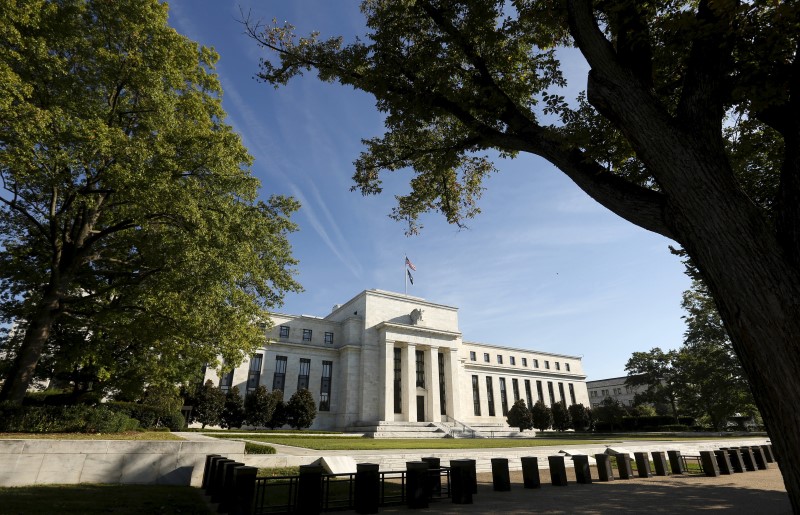(Bloomberg) -- If September’s dysfunction in the market for repurchase agreements has revealed anything, the biggest impediment is the dominance of a few institutions, according to a group of non-primary dealers.
The Independent Dealer and Trader Association, a group of nine mid-sized securities firms led by Wall Street veteran James Tabacchi, has proposed several options to reduce how much the funding market relies on just a few players and alleviate volatility spikes.
“Everything has become very concentrated and with concentration you’re going to have more volatility,” he said.
The group urges the Federal Reserve to continue increasing the amount of reserves in the system, but also recommends creation of a repo facility that’s accessible to more than primary dealers as well as loosening regulations for smaller firms to encourage more market participation.
The document has been presented to staff at the Treasury Department, Securities and Exchange Commission and Federal Reserve Board of Governors in Washington, as well as New York Fed officials to discuss the structural deficiencies and potential solutions.
The upheaval is forcing a reckoning with the regulators. Financial Stability Oversight Council, led by Treasury Secretary Steven Mnuchin, called for federal agencies to determine what prompted rates to spike in September. Former Fed Governor Daniel Tarullo said Thursday the financial system is exclusionary to any institution that’s not a bank. To ask JPMorgan Chase (NYSE:JPM) & Co. and Citigroup Inc (NYSE:C). to be the “liquidity insurers” for the entire system isn’t a “particularly good position to be in.”
JPMorgan (NYSE:JPM) Chief Executive Officer Jamie Dimon said in October that the bank was unable to deploy cash to calm the market because of post-crisis liquidity regulations.
Tabacchi, who spent two decades at what is now Citigroup (NYSE:C) and founded South Street Securities, a broker-dealer with a repo book of $32 billion, is concerned that the funding market could further destabilize with the exit of a major lender.
“If you only have four or five players providing 90% of the source of funds and you lose one-and-a-half or two, rates are going to go through the roof,” Tabacchi said. “It’s not numbingly complicated math.”
Fed Accessibility
The Fed has been injecting liquidity into the repo market since Sept. 17 when the overnight rate for general collateral spiked to 10% from around 2%. It has also been buying Treasury bills to add reserves to the system.
While the association believes this is the first step, they also recommended the Fed to consider introducing a repo facility that is accessible to a wider swath of credit-worthy participants.
This is because even though the institutions can access cash around 1.55% to 1.60% at the temporary operations, dealers are adding a premium for others to access their balance sheet, according to Priya Misra, head of global rates strategy at TD Securities.
That means “somebody who doesn’t have access to the Fed facility is getting hurt,” she said. Misra also said post-crisis regulations actually make it more difficult for the central bank to expand its counterparties to non-primary dealers, citing Dodd-Frank legislation, which changed the Fed’s authority for lending.
Yet Patricia Mosser, a professor of Columbia University’s School of International and Public Affairs, and a former deputy desk open markets desk manager at the New York Fed, said Dec. 5 it’s possible for the central bank to set up such a facility that includes non-bank entities without running up against Dodd-Frank.
Even so, minutes from the October Federal Open Market Committee meeting showed that various participants commented on the need to carefully evaluate design choices for any facility to guard against the potential for moral hazard, stigma, disintermediation risk or excessive volatility in the Fed’s balance sheet.
There are still other ways to reduce repo risks without Fed taking on a larger role in the market, according to Tabacchi.
Rolling back of the Capped Contingent Liquidity Facility, a backstop implemented by the Fixed Income Clearing Corp. in 2018, could lower liquidity risk, he said. While the mid- and smaller-sized dealers have reduced their exposure since the rule went into effect, larger institutions ramped up their overnight activity. Within the first six months of implementation, peak liquidity risk almost doubled to $115 billion versus roughly $60 billion, Tabacchi said.
“If you want to eliminate spikes, you need to level the playing field,” he said. “It’s not going to get fixed by one lever like the SOMA portfolio or the repo facility.”
Overnight repo for Dec. 31 through Jan. 2 was trading between 3.75% and 4% this week, according to ICAP (LON:NXGN), an indication market participants are concerned the largest banks will retreat from the market at the end of the year, crimping the availability of funds. Should the structure of the repo market remain unchanged, it risks driving out these mid-sized dealers, which could continue to exacerbate volatility.
“If you drive all of the mid-market players out of the marketplace, that pressure valve goes away,” he said. “The repercussion of that is concentration risk and a much more volatile market.
